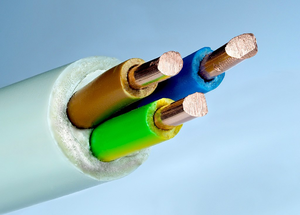Difference between revisions of "Electrical Conductor"
(→Key Stage 3) |
|||
| Line 24: | Line 24: | ||
==Key Stage 3== | ==Key Stage 3== | ||
===Meaning=== | ===Meaning=== | ||
| − | An '''electrical conductor''' is a [[material]] with a very low [[Electrical Resistance| | + | An '''electrical conductor''' is a [[material]] with a very low [[Electrical Resistance|resistance]] to the flow of [[electricity]]. |
===About Electrical Conductors=== | ===About Electrical Conductors=== | ||
Revision as of 19:27, 25 February 2019
Contents
Key Stage 2
Meaning
An electrical conductor is a material that allows electricity to flow through it easily.
- Singular Noun: Electrical conductor
- Plural Noun: Electrical conductors
- Verb: To electrically conduct
- Adjective: Electrically conductive
About Electrical Conductors
| Metal is a good electrical conductor. | Salty water is an electrical conductor. |
Key Stage 3
Meaning
An electrical conductor is a material with a very low resistance to the flow of electricity.
About Electrical Conductors
- Metal elements are good electrical conductors.
- Metals make good conductors because they have free electrons that can move around the metal.
- Non-metal elements are usually poor electrical conductors. Carbon in the form of graphite is an exception to this.
- Salts that are molten or dissolved in water are electrical conductors.
- Salts make good conductors when the ions are free to move through the substance.
- To determine if an object is a good electrical conductor the object can be added to a circuit. If a current flows then it is a good conductor.
- To compare the conductivity of different objects an ammeter can be added to the circuit. The higher the current the better the object is at conducting.


